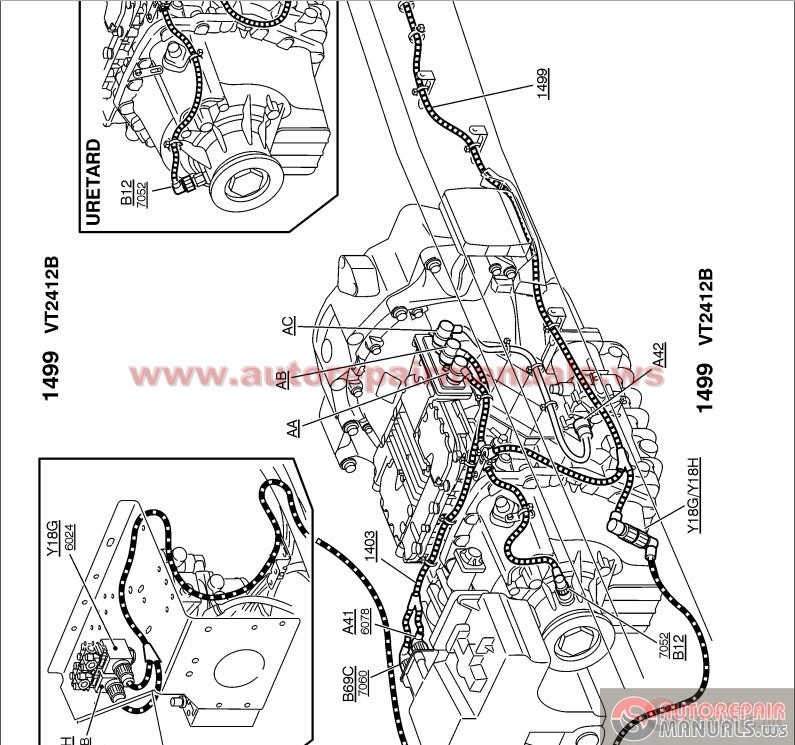Volvo Truck D13 Engine Workshop Manual Diagram
Like all of Volvo's engines, the D13 is built on a foundation of proven, developed architecture that leverages innovative hardware to maximize efficiency. Energy that is normally lost is recovered with standard features including low-friction pistons and a two-speed water pump, as well as optional features like turbo compounding. A standard hybrid common rail fuel injection system gets the most power out of every drop of fuel. Our reliable variable geometry turbocharger compresses and moves the intake air while providing the correct back pressure to drive the EGR process.
2009 Volvo D13 Engine Problems
Ideal for applications operating primarily at cruise speed, the D13TC uses turbo compounding to capture and harness energy typically lost through the exhaust to recover lost horsepower and improves fuel economy.
Some Volvo Truck & Tractor Manuals PDF, Wiring Diagrams shown above. One of the world's leaders in the production of heavy truck company Volvo Trucks Corporation began its operations at the end of 1920 as the automobile branch of the famous SKF bearing company. The first in a series from April 1927 were running cars, and only in February 1928 with the plant rolled off the first 1.5-ton truck Volvo. Freight cars of this brand soon became famous for a very high build quality and excellent reliability, which benefits them apart from the competition models.
Not surprisingly, with such an attitude Volvo brand has taken its place in the sun. Former modernized series trucks full weight 19,0-27,5 m. With an improved cab made a new series «FL7» (6598 cm3) and «FL10» (9607 cm3 230-318 hp), which since 1985 steel lock system in the drive brakes. From 1984 cars 'FL10» have also been proposed with a new sleeper cab Eurotrotter with a high roof and the location of the two-tiered arrangement of beds.
The upper part of the cabin was made of all-metal or plastic in the form of a removable air fairing. In the 90-ies. Basic series «FL6» offered in Volvo FH12.340, 1994.
4 two and three-axle versions with full weight from 7.5 to 26 tons (the model of «FL608» to «FL626»). All we used 6-cylinder diesel «D6A» (5480 sm3,180-250 hp), 6, or 8-speed gearbox, spring or air suspension. Since 2000, the 'light' versions of the series 'FL6' offered with a new design in a more efficient and safe performance, relevant standards 'Euro-3'.
From 1998 to replace the heavy series «FL» started production of a new range of «FM» full weight of 18-42 tons., Including vehicles for urban operations, and for work on the building. At the same time, they served as the basis for a 'fresh' series 'the FH', which is used by 78% of the parts.
Trucks are available in versions «FM7», «FM10» and «FM12», equipped with engines corresponding working volume capacity of 250-420 hp, manual or automatic, providing from 5 to 14 assists. In 1998, ' Volvo' plants, which employ 23 thousand. Man, produced 85 thousand. GVW trucks over 6 tonnes and buses, ranking sixth in the world. In the summer of next year, the company strengthened the already stable position by buying a 70% stake in the Swedish company '.

This paved the way education in the third world, the Volvo-Scania group, however, the spring of 2000, the EU Commission vetoed the agreement. A few more months and a group of ' Volvo' bought 100% of shares of load compartment, creating another major transnational concern for the production of trucks.